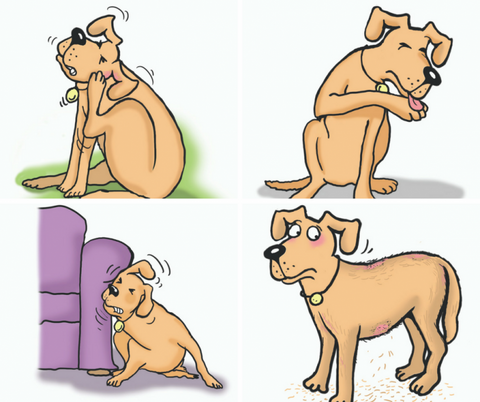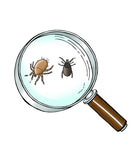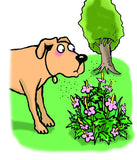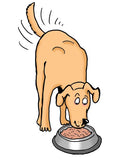
Why is your dog itching?
Why is your dog itching?
We’re exploring 4 common reasons why your dog may have itchy skin. Many of our dogs love a good scratch behind the ears – but what causes dog itching, and how can you tell if they start to scratch excessively? In this blog we take a closer look at what’s happening when your dog has itchy skin – and how you can soothe the urge and help to reduce excessive scratching.
Spotting the signs of an itchy dog

Spotting an itching dog sounds simple – but sometimes it's a bit more complicated than you think. As well as the typical scratch-with-the-hind-leg, dogs respond to itches in other ways. Have a think about the below questions:
- Do they nibble at their skin?
- Do they lick their paws?
- Maybe they rub their face or body on furniture?
- Have they got bald patches?
- Or do they get lots of ‘hot spots’ (pyoderma)?
These are all symptoms of irritated, itchy skin – so what’s happening when your dog gets the urge to itch, and can you help?
Why is your dog itching?
There are many reasons why your dog has itchy skin, so let’s take a closer look at some of the more common ones to help you spot what might be going on.
1. Fleas, ticks and mites
Even the cleanest dogs can pick up fleas and ticks if you forget to regularly apply the appropriate treatment. In the case of pests, prevention is the best approach. We use a spot-on treatment and keep track of how often we need to reapply by setting a calendar reminder every 4 weeks.
If fleas have already entered your home, there’s a guide to beating the pesky biters here.
Other itchy pests to watch out for include harvest mites, dust mites and ear mites. There’s advice to spot and avoid harvest mites here – though when it comes to ear mites or a dust mite problem, you’ll need to pop to the vets for expert help.

2. Mange
Another cause of your dog itching is mange. There are two kinds of mange: sarcoptic mange (or ‘canine scabies’), and demodectic mange. Symptoms can include intense itchiness accompanied by frantic scratching, restlessness, hair loss and reddened skin.
Both are caused by mites and call for a trip to the vets for treatment– usually this will take the form of medication given orally or applied topically, or using a shampoo or dip.

3. Environmental allergies or sensitive skin
One of the most common causes of dog itching is environmental factors. Just like people, dogs can have sensitive skin. And these dogs are more likely to react to ‘triggers’ – that’s things in their environment like:
- Pollen – yes, dogs can get hay fever too!
- Plants and grasses
- Cleaning products like laundry detergent
Contact with these irritants can cause your dog’s skin to feel itchy, which leads to scratching and nibbling. If this is prolonged, it can cause skin damage and hair loss – some dogs scratch themselves raw – which makes them uncomfortable and damages their coats.
Thankfully, there’s a lot you can do to help your dog’s itchy skin if it’s due to environmental factors. Start by avoiding their triggers – where practical – then boost their skin’s defences by adding an Omega 3 & 6 supplement like YuDERM Itchy Dog to their food.
One of the most common sensitivities is pollen. And as no-one wants to skip walks due to the pollen count, we’ve written a guide to help you manage your dog’s hay fever here.

4. Dietary sensitivities and allergies
Diet is another factor that could give your dog itchy skin. As well as upset tums, dietary sensitivities can lead to itchy skin, a dull coat, paw nibbling, and even hot spots. Dogs can be sensitive to lots of different ingredients, including:
- Meats like lamb and beef
- Grain
- Soy
- Colourings and flavourings
There’s advice on understanding food sensitivities – and helping your dog get back on top form – in this article about dogs with sensitive digestion.

More ways to help your dog’s itchy skin
Of course, there are many reasons why dogs itch and scratch and we haven’t covered everything here. If you’re concerned about your itching dog, we’d always recommend a trip to the vet.
If you’ve had a look at fleas, mange, environmental or dietary factors and still can’t find the cause, our top tip would be to have another look for harvest mites. Again, you can find more information in our harvest mite blog here.
Do you have a dog who’s prone to feeling itchy? How do you help to soothe the urge to scratch? Maybe you’ve found an amazing shampoo, or a have a top tip you’d like to share? Please do leave a comment, or head over to Facebook, Instagram and Twitter to let us know there.





